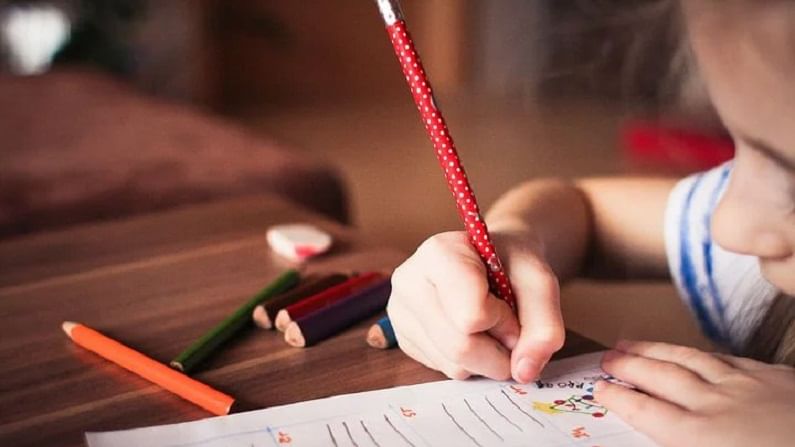Plan for your child's education this way
In equity mutual funds, you can expect a return of up to 12% in the long term. EPF has an interest rate of 8.25% for the financial year 2023-24. PPF offers 7.1% annually, bank FDs offer 7 to 8%, while the Sukanya Samriddhi Yojana offers an interest rate of 8.2%. You need to choose an investment option that can beat inflation.

If you haven’t planned your child’s education expenses at a young age, it can cause you immense financial troubles going ahead, when they begin seeking admission to colleges for their higher studies. To fund that, you may end up taking a loan at exorbitant interest rates, which will take ages to repay. Otherwise, your child will have to spend a large chunk of his or her career paying back instalments of their education loan.
Notably, retail inflation has been around 6% for the past few decades, whereas the cost of education is increasing at a rate of 11-12%. This means that the cost of education doubles approximately every 6 to 7 years.
But don’t worry, you can build a big corpus for your child’s education, all by adding small amounts overtime, so that you don’t have to worry about your child’s education expenses anymore.
According to a report released by Bankbaazar in 2023, the cost of a 2-year MBA program in a leading business school was 3,00,000 rupees in 2003, which rose to 16.6 lakh rupees in 2013 and 24.6 lakh rupees in 2023. The annual inflation in education expenses during the past 20 years has been around 11% .
So, assuming an 11% inflation in education, a 24.6 lakh fee in 2023 will increase to 41.45 lakh rupees in 2028, jump to 69.8 lakh rupees in 2033, be about 1.17 crore rupees in 2038 and a massive 1.98 crore rupees in 2043.
To accumulate this amount, financial planning needs to start during the child’s infancy itself. If your child is currently one year old, and estimating that he/she takes admission in an MBA course at the age of 20 in 2043, then you should have approximately 2 crore rupees for their 2 years of study. Naturally, it is not easy for a middle-class person to arrange for a sum of 2 crore all at once. Hence the need to financially plan for their education from the start.
Now, it is difficult to determine what your child would want to study 15-20 years from now. But there are some basic questions for which you should have answers for. These include how many years later will they need funds for their higher studies, the future cost of the course you want them to study. You will have to calculate all this using an inflation calculator. An inflation calculator adjusts your current expenses for inflation and tells you its future cost Suppose inflation increases at a rate of 11% per annum. Then, for a course that costs 1 lakh rupees today, you will have to spend 2.84 lakh rupees after 10 years.
It is very important to start accumulating for your child’s education fund on time. This is because the sooner you start investing, the more time you will have for your money to grow through compounding. Even a small investment made consistently can transform into a large corpus over time.
Choosing the right investment option is a key consideration. There are many investment options available such as equity mutual funds, Employee Provident Fund (EPF), Public Provident Fund (PPF), Fixed Deposit (FD), and even options like Sukanya Samriddhi Yojana for the daughter.
In equity mutual funds, you can expect a return of up to 12% in the long term. EPF has an interest rate of 8.25% for the financial year 2023-24. PPF offers 7.1% annually, bank FDs offer 7 to 8%, while the Sukanya Samriddhi Yojana offers an interest rate of 8.2%. You need to choose an investment option that can beat inflation.
Returns in equity mutual funds are not fixed, since they depend on market conditions. However, good returns can be expected from equity mutual funds in the long term. Suppose your child wants to do MBA in the year 2043-44, and the inflation rate of education expenses is increasing at 11% per year. Going by this, at that time, the cost of MBA will be approximately 2 crore rupees, which is the target amount.
Your investment duration is 20 years and the estimated return is 12%. So, according to this calculation, you will need to start a monthly SIP of 20,000 rupees in equity mutual funds. During this period, you will accumulate a total of 48.50 lakh rupees, and earn a return of approximately 1.5 crore rupees on them.
When you invest for a goal like education, along with accumulating money, you also need to devise a strategy to withdraw this money in time.
If you don’t have a large amount to start SIP, there is no need to worry. Start investing with an amount that you can afford every month. As your earnings increase, keep increasing this SIP amount. For this, you can choose the option of step-up or top-up SIP when starting SIP.
Invest not only for your child’s education but for other goals as well. Don’t forget your funds after investing. Instead, review your investment strategy at least once a year. When we plan for long-term goals, we also have to face many ups and downs in life. Therefore, for financial risks such as job loss, serious illness, or death, ensure adequate coverage of your term and health insurance, so that your planning and goals stays on track.